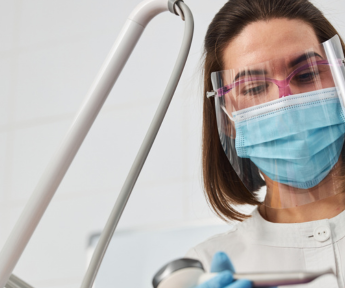The CSA Group — a not-for-profit standards organization — released for review a new draft standard on the “Selection, Use, and Care of Respirators” (CSA Z94.4:25) for workplaces, specifically including health care. This new standard is designed to ensure much better protection for health-care workers and for everyone seeking health care.
We live insulated from many dangers because of public measures that protect us from things like contaminated food, shoddy construction, unsafe workplaces and other risks that escalate when producers and employers cut corners that take risks with our safety.
We’re also better protected because of occupational health and safety legislation coupled with standardized safety equipment. Rear-view mirrors? The first cars didn’t have those — now we take them for granted. Like a rear-view mirror, a respirator is a simple device that makes both users and those around them safer.
CSA Group is an independent not-for-profit standards organization with international accreditation, including from the Standards Council or Canada. Since it was founded 1919 as the Canadian Engineering Standards Association, it has helped keep Canadians safer by establishing standards for many products, including safety equipment.
Since the 1980s, it has had a standard for particulate respirators. Canada led the way on safety then, and the new draft CSA respirator standard ensures that Canada is continuing to lead.
The science on respirators
Respirators, a specialized type of mask, are designed to seal against the face so that they effectively filter the air for wearers. They’re made from charged fibres in multiple layers, trapping dangerous particles before they reach the wearer.
Respirators have long been considered essential in many workplaces. Asbestos and paint particles, for instance, should never be inhaled into the lungs. Similarly, health-care workers and patients should not inhale airborne bacteria or viruses. Measles, influenza, COVID, tuberculosis and other pathogens can float in the air, carried inside tiny aerosolized particles that we all produce when we breathe, speak, cough or sneeze.
The evaluation of respirator effectiveness in health care has been intense, especially over years of the COVID-19 pandemic. There have also been significant technical improvements in their design for improved efficacy and comfort. A recent review and meta-analysis that one of us worked on examined more than 400 papers and concluded that respirators significantly reduce transmission.
The draft of the New CSA Standard
Standards are the backbone of public safety. Regular updating of standards ensures that, when science or technology advance, our systems can adapt in a structured, clear and enforceable manner. With the evidence supporting respirator use against airborne disease transmission, particularly for COVID-19, it was time for the CSA to update its respirator standard.
The importance of protecting workers and patients in health-care settings is reflected in the new standard. For the first time ever, it includes an entire section dedicated to health care where pathogen exposure is much more likely — and more likely to cause further spread. As the CSA notes, health care is of particular concern because of the number of health-care workers and the knock-on effects of pathogen spread on “the general population.”
The new edition has been in development by experts from across disciplines for more than two years. The draft — which was removed from CSA Group’s website at the end of the public review period — makes a number of key changes.
It uses a robust, layered approach that incorporates two fundamental concepts in safety: “the hierarchy of controls” and “the precautionary principle.” The first creates a structure for considering all of the different ways that safety can be improved, while the second requires taking steps for safety even in situations where the science is not yet clear (as recommended by the SARS Commission) — in other words, “better safe than sorry.”
For health-care workplaces, important changes include:
- By default the use of respirators by health-care providers throughout the health-care facility is required unless a detailed risk assessment by qualified experts deems a space exempt due to engineered risk reduction (such as displacement ventilation, upper air germicidal ultraviolet radiation, etc.).
- A minimum requirement for Protection Level 1 respirators (for example, CA-N95, NIOSH N95), which provide respiratory protection to the wearer.
- Providing various styles and sizes of respirators for free that meet user comfort, fit and breathability needs, fit testing, training and promoting sustainability, such as through reusable and/or plant-based materials. New designs for respirators make wearing them for long periods much more comfortable due to greater breathability.
The draft CSA respirator standard is evidence-based and necessary to bring workplace protections up to date with science for the benefit of all Canadians, including health-care workers and patients. Expressing concern for safety is not enough to make it happen; the new standard must be accepted into practice, and the relevant provincial and federal health and safety regulations updated to require its adoption.

Dick Zoutman, Professor Emeritus, School of Medicine, Queen's University, Ontario; Julia M. Wright, George Munro Chair in Literature and Rhetoric, Dalhousie University; Mark Ungrin, Associate Professor, Department of Comparative Biology & Experimental Medicine, Faculty of Veterinary Medicine, University of Calgary, and Ryan Tennant, PhD Candidate, Systems Design Engineering, Faculty of Engineering, University of Waterloo
This article is republished from The Conversation under a Creative Commons license. Read the original article.


